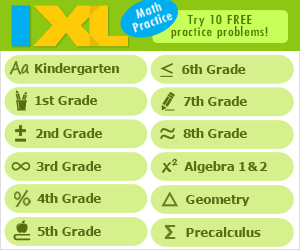7th Grade Social Studies Standards - Geography
Links verified 3/29/2011
Standards
7.3.1 Maps - Identify and use the basic elements of maps and mapping. 7.3.2 Continents and Oceans - Locate the earth's major physical characteristics (i.e., 7 continents and 4 oceans). 7.3.3 Tennessee Rivers - Identify the major river systems of Tennessee. 7.3.4 Rural, Suburban, and Urban - Distinguish the differences among rural, suburban, and urban communities. 7.3.4 tpi Student Maps - Create student maps illustrating geographic terminology (e.g. archipelago, atoll, bay, canyon, cape, continental divide, delta, estuary, fjord, headwaters, glacier, gulf, island, isthmus, lagoon, mesa, ocean currents, peninsula, plateau, reef, strait.) 7.3.5 Grand Divisions - Select the natural resources found in the 3 grand divisions of Tennessee (coal, copper, timber, plants, and animals.) 7.3.6 Longitude and Latitude - Locate on map specific lines of longitude and latitude. (i.e., Prime Meridian, International Date Line, Equator, North and South Poles, Tropics of Cancer and Capricorn, and Arctic Antarctic Circles). 7.3.7 Largest TN Cities - Compare the five largest cities of Tennessee using a bar graph. 7.3.8 Demographic Concepts - Define demographic concepts (i.e., population, population distribution, population density, growth rate, family size, and infant mortality). 7.3.9 Landforms - Identify the location of the earth's major landforms and bodies of water (i.e., Rockies, Andes, Himalayas, Alps, Urals, Sahara desert, Nile River Valley, Great Plains, Mississippi River, Amazon River, Thames River, Seine River, Rhine River, Danube River, Tigris River, Euphrates River, Ganges River, Volga River, and Yellow River). 7.3.10 Geographic Characteristics - Identify the characteristics that define a region geographically. 7.3.11 Earth Processes - Recognize specific physical processes that operate on the earth's surface (i.e., erosion, volcanoes, earthquakes, wind and water currents, plate tectonics, and weathering). 7.3.12 Physical Regions of TN - Identify the six physical regions of Tennessee (i.e., Unaka Mountains, Valley and Ridge, Cumberland Plateau, Highland Rim, Central Basin, and Gulf Coastal Plain). 7.3.13 Environmental Changes - Recognize the definitions of modifications on the physical environment (i.e., global warming, deforestation, desert, and urbanization). 7.3.13 tpi Map Projections - Compare the four major families of map projections; conformal, equal-area, azimuthal, and equidistant. Explain the biases of the Mercator's versus the Peter's projections. 7.3.14 Map Types - Distinguish between types of maps. (i.e., political, physical, climatic, land-use resource, contour, elevation, and topographic.) 7.3.15 Read a Map - Interpret a map indicating scale, distance, and direction. 7.3.16 Diversity - View and discuss a show which shows a diverse global culture. 7.3.17 Time Zone - Read and interpret a time zone map. 7.3.18 Effect of Humans - Analyze the environmental consequences of humans changing their physical environment (i.e., air and water pollution, mining, deforestation, and global warming).
Interpret a population pyramid.7.3.18a Human Migration - Examine reasons and patterns of human migration through the use of maps, charts, and diagrams (i.e., famine, natural disasters, political and religious oppression, and wars). 7.3.19 Population Changes - Predict the consequences of population changes on the Earth's physical and cultural environments (I.e., air and water pollution, mining, deforestation, and global).
Search Internet4Classrooms

Custom Search






